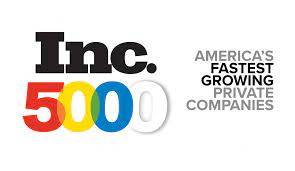As a merchant, whether B2C or B2B, having an effective, scalable, and manageable E-commerce website is undoubtedly central to your organization’s plan for growth and success. Magento and VTEX are two well-established E-commerce platforms to help you achieve such goals, although each company has taken a very different approach. While there are many differentiators, we’ve done our best to highlight some of the most important and impactful differences between having your online storefront powered by VTEX or Magento:
Open Source vs SaaS
Magento is an industry leader amongst open-source platforms. As an open platform, both Magento Community and Enterprise are both open to being extended. This makes Magento very malleable when it comes to adding new features. This also means that you as a merchant need to have your website hosted, address security updates and software patches, and make sure that the core integrity of your Magento software remains healthy. This can lead to unpredictable maintenance.
VTEX is a cloud based solution, offered as Software as a Service (SaaS). With VTEX, your core software is hosted and maintained by VTEX, significantly cutting down on the time, headaches, and unbudgeted labor that open-source site owners may run into.
Licensing
Magento Community is free. Magento Enterprise has license fees starting in the $20,000+ per year range. VTEX is billed on a sliding scale, starting as low as $250 + 3% Revenue Sharing, with plans going as low as 0.5% of revenue sharing for larger enterprises. However, all VTEX users enjoy a wider range of Enterprise features and support. VTEX’s license also includes hosting, maintenance, and security. Magento users need additional budgets for these additional costs.
Support
Magento Community is relatively unsupported. There are user forums and such, but there is no direct support provided by the Magento team. Magento Enterprise comes with some support, but it’s generally considered to be pretty basic since the Magento team provides the base software, but isn’t nearly as involved with how you’re using that software. They can answer basic questions about out-of-the-box functionality, but aren’t known for being as helpful with specific questions about your Magento instance.
VTEX, as a SaaS platform, is in the business of providing both their platform, and their support. They’re more readily able to see your VTEX instance inside and out, and provide feedback, suggestions, and recommendations.
Time to launch
As an open-source platform, Magento requires various setup and testing with a hosting account. VTEX on the other hand, as a SaaS platform, is meant to require less technical setup. As a rule of thumb, VTEX merchants can anticipate a speedier launch of a new site.
Maintenance Labor
Magento requires the application of security patches, bug fixes, and other updates. The typically come in packages that contain several updates meant to be applied at once. This means that merchants need to apply software updates. It also means that there’s an increased likelihood that patches and software updates, which typically contain a wide range of code updates that are applied simultaneously, will conflict with something in a Magento store, whether the theme, extensions, or other customizations.
VTEX continuously test and pushes core software updates behind the scenes. As with most cloud softwares, website owners continue to get new features and improvements accordingly. In 2016 VTEX had over 8,000 deployments with no downtime (http://releases.vtex.com/).They even publicly share information about the health and status of their systems (http://healthcheck.vtex.com/ and http://status.vtex.com/) with daily updates of issues and incidents.
Innovation
Magento is a robust solution for sure. There are several incremental improvements in Magento 2, such as a speedier checkout, better site search algorithm, a product creation wizard, and out-of-the-box support for PHP v7. Magento software update releases, outside of security patches, are typically much more spaced out.
VTEX goes above and beyond with many features, such as a patented password-free checkout, and order notes that show every step step of fulfillment, including copies of transactional E-mails that shoppers have received. VTEX is pushing a larger volume of software updates hands-down, with constant additions and tweaks to keep innovating their platform.
Extensions
Magento 1 has thousands of available extensions in the Magento Connect portal, as well as direct from developers. There are currently over 1000 Magento 2 extensions available on the new Magento Marketplace website. Magento Marketplace only lists extensions that have undergone a code review process by the Magento team. Even with that code review, extensions don’t necessarily always work together, or work out-of-the-box with your theme and other customizations. There are also Magento Extensions being offered by developers that haven’t chosen to pay Magento for code review, and that don’t want to agree to Magento’s revenue share requirements of being in their new Marketplace. When possible, we do recommend sticking to extensions in the Marketplace, since these are getting reviewed by Magento.
The goal of the VTEX Extension Store is to become a homogeneous development environment where Apps will be natively connected and integrated. In other words, Apps are intended to work more closely with a merchant’s VTEX store, much like mobile Apps do on a cell phone. That’s not to say that there can never be a conflict or error, but VTEX Apps are intended to be a curated part of the VTEX experience, with easy enablement of Apps in your VTEX instance, and more testing and support by the VTEX team. The VTEX Extension Store is intended to be a place where you can download and install Apps seamlessly within your store. As a platform focused on allowing merchants to scale to meet Enterprise needs, VTEX considers the infrastructure required to guarantee the quality of each app. With that in mind VTEX has created the VTEX IO that allows for the development of features and integrations embedded in apps, based on “serverless and setupless” concepts, where partners can leverage the VTEX cloud infrastructure to provide Apps to merchants. VTEX is proud to be focused on continually improving an environment that’s fully manageable, frictionless and seamless for merchants, and where developers and marketers can explore new trends without fear of dropping business KPIs and sales.
B2B
According to Gartner, by 2018 companies that consumerize their B2B sales channels will gain market share and see revenue increase by up to 25%.
Out-of-the-box, most B2B merchants building stores on Magento would need extensions or other spent in order to successfully launch a store that meets their specifications. This can include features like adding customer and order attributes, moderating customer registration, and hiding prices,products, categories, payment methods, and shipping methods. The latest Magento Enterprise versions do have some new B2B functionality available as part of your software licensing agreement, including features to help with:
- Multiple buyers per account
- Quote requests
- Quick order entry and requisition lists
- Payment on account
- Shared catalogs
These are still rather new, and as such, can be expected to undergo rounds of improvements, but it is a promising development for Magento Enterprise merchants.
VTEX, with a strong history of working with brands and manufacturers, has a longer history of built in features intended to make the shopping experience for business buyers better. VTEX includes B2B features like:
- Restricted access
- Customer clusters – set specific pricing, promotions, shipping, payment, etc.
- Multi-price lists
- Order via SKU
- Quick reorder
- Specific logistics configuration (carriers, warehouses and inventories)
- Repeat orders
PCI Compliance
With Magento you can certainly pass PCI Compliance scans, but you’re responsible to secure Magento PCI compliant hosting, and to make sure that it remains compliant. You’re also responsible for making sure that your core software and extensions get patched, and that you otherwise follow many security best-practices.
With VTEX, you’re renting a solution that’s maintained, hosted, and secured by your software provider. This minimizes your PCI Compliance footrprint.
Migration
With Magento, migrating data from your old storefront is completely up to you and your contractors. Some data, such as product data that’s mastered in an ERP, POS, Accounting Suite, or PIM Tool, may get pushed into Magento or VTEX. However, for larger clients with more complex migration needs, the VTEX team can offer direct support in order to make the transition to VTEX even easier.
Market Focus
Both systems are focused on helping growing SMB businesses and enterprise merchants. Magento has a bit more flexibility, and VTEX has more stability and predictability.
Note for Magento 1 Users
While the original sunset date for Magento 1 has been rescinded, in December 2018 PHP v5.6 will reach end of life, and Magento Extension Developers are spending less time working on Magento 1 extensions. As such, it will continue to make less and less sense to keep investing into this older technology. It’s foreseeable that merchants will continue to leave Magento 1. Moving to Magento 2 requires a full website rebuild, as it is a replatforming, not an upgrade. For merchants that were very happy in Magento 1, Magento 2 could be a great option. However, there’s a strong case to be made for seriously considering VTEX for merchants that are seeking a SaaS solution.
If you’re still not sure which platform is right for you, don’t worry! There are lots of variables, and the team at JLB Florida would be happy to help evaluate your needs, and make specific recommendations for your business. To schedule a complimentary assessment, please call us at (954) 530-6125, or reach out through our contact form.










